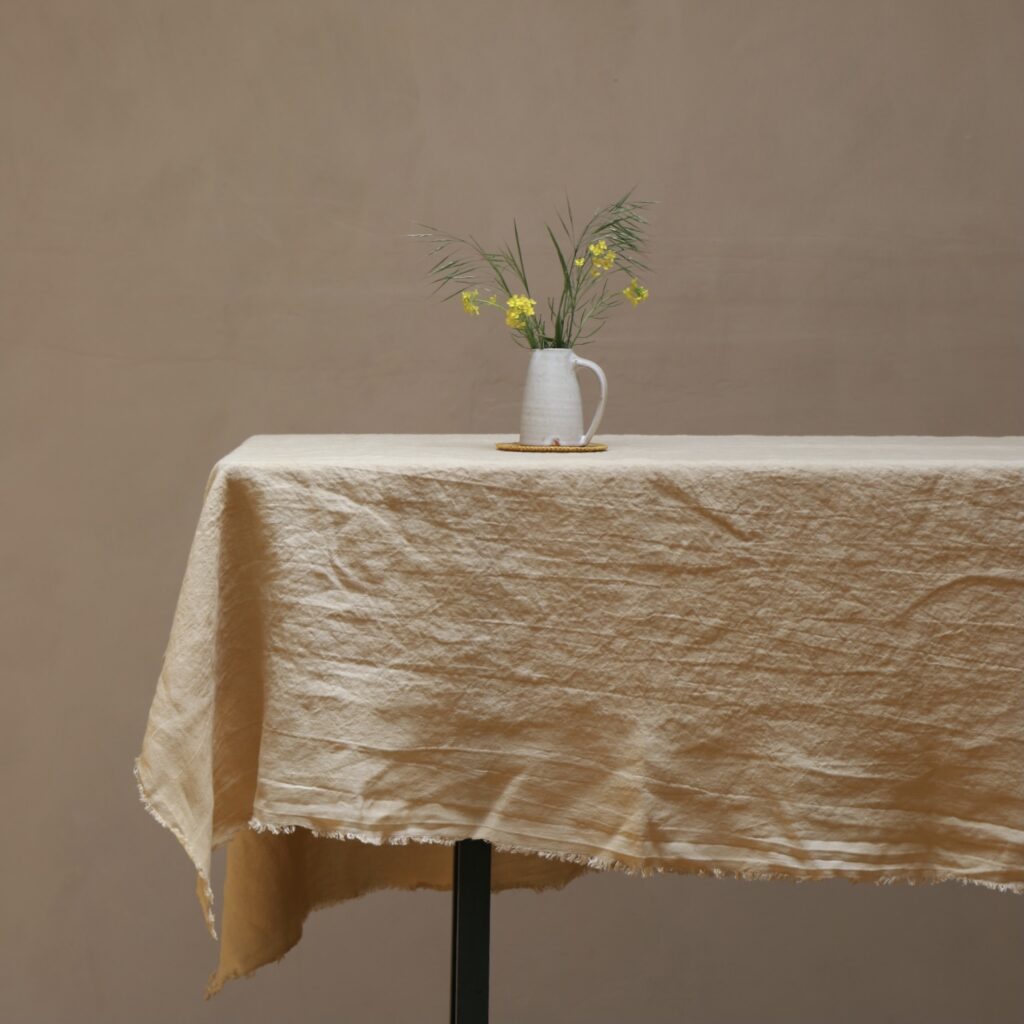
Onion Skin Dye
When it comes to natural dyeing, the skins of the yellow onion produce beautiful ranges of soft yellow to rich gold and all shades in between. Similar to avocado stones the skins are high in tannin and because of this, the colour will bind to the fabric without the addition of a mordant. A mordant helps the colour bind to your fibre while increasing colour & light fastness. Yellow onion skins are a great natural dye to start with as they are inexpensive, easy to collect & and release their colour quite quickly. They also make a great dye if you’re looking for a fun project to do with kids.

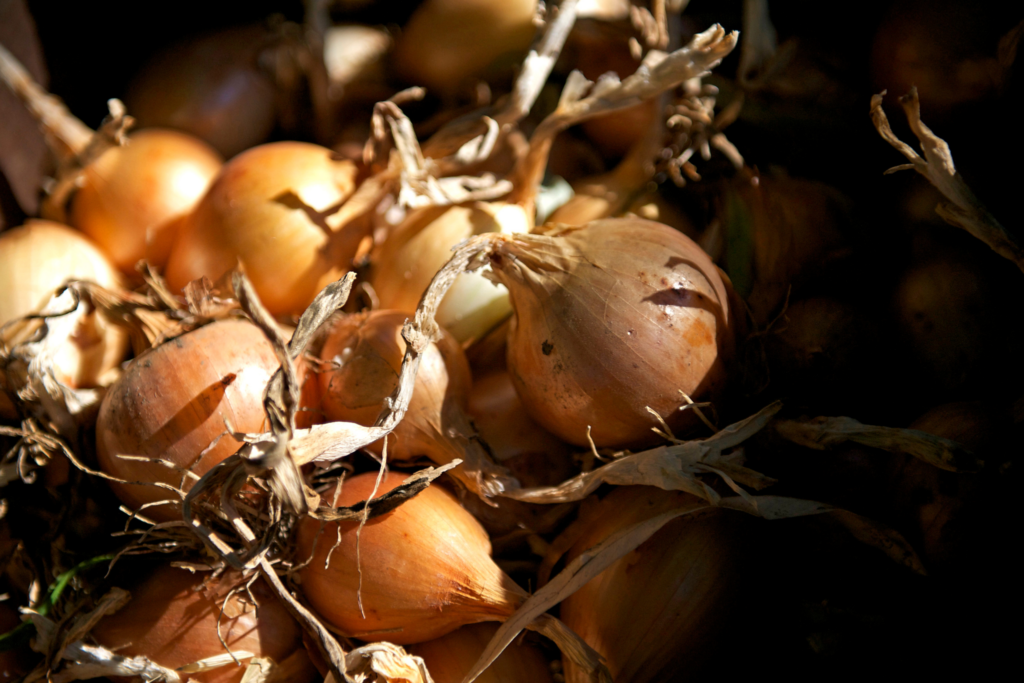
Helpful tips
In gathering your onion skins, be sure to store them in a bowl or brown paper bag until you have saved enough. Don’t store them in a plastic or airtight container as they will sweat, start to stink & develop mouldy. If you want to keep the dye colours clear, don’t mix the red onion skins in with the yellow. Red onion skins give shades of brown which will muddy the rich yellow hues of the yellow onion. The number of skins you use will determine the depth of shade you will be able to achieve. You can get a good-strength dye from a minimum of 15 onions, the more you use the stronger your colour will be.
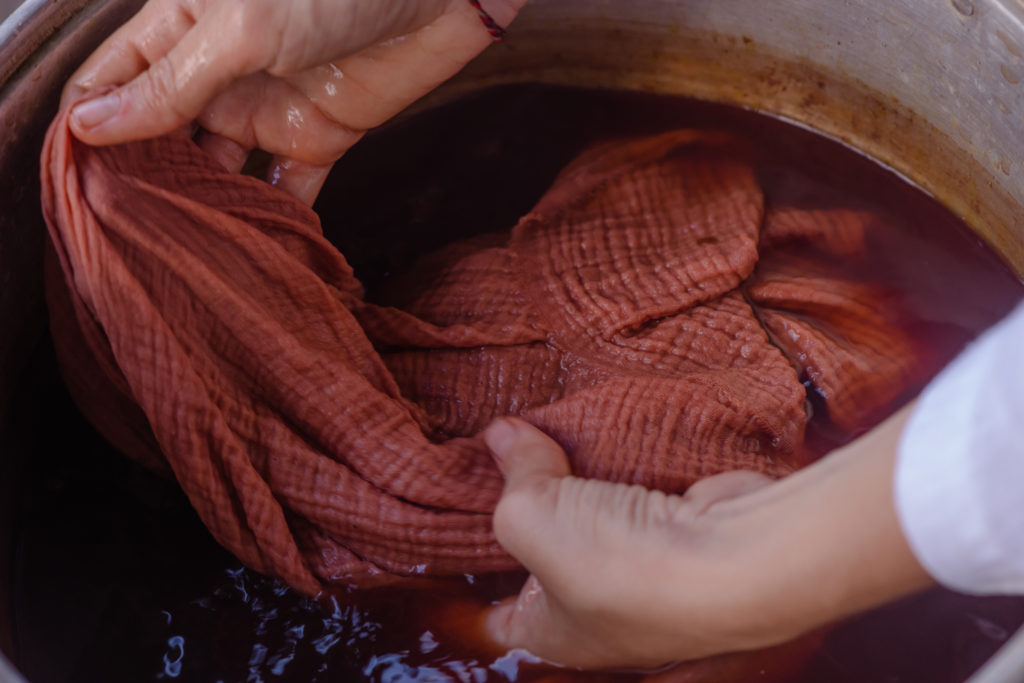
Natural dyeing
Before starting you will need something to naturally dye, I always recommend an old t-shirt, small pieces of fabric, napkins or tea towels to begin. Before you make your dye, you have to clean your fibres. We do this using a method known as “scouring” which removes any residual impurities, waxes or oils. For a simple ‘scouring’ method pre-wash your items (on whatever cycle you would normally choose) in your washing machine using 1 tbsp (per item) of soda crystals or washing soda.
What you need to naturally dye
- Water
- Gloves
- Strainer
- Heat source
- Wooden Spoon
- Something to dye
- Onion skins (a minimum of 10)
- A big pot (large enough to hold whatever you’re dyeing)
- Container or basin filled with water
How to make onion skin dye
- Wash your fibre with 1 tbsp of any of soda crystals do not use detergent then soak it in a basin of water while you prepare your dye.
- Fill your pot 3/4 with water & add your onion skins.
- Bring to a boil, then immediately reduce to a low simmer.
- Gently simmer the dye for at least 1 hour. Once the water has changed colour and the dye has been extracted, use the strainer to remove the onion skins.

How to naturally dye your fabric
- Take your fibre from the basin, squeeze out the excess water then submerge it completely in the dye bath.
- Simmer on the lowest heat for a minimum of 30 minutes, stirring frequently.
- When you are happy with the colour, turn off the heat, let the dye bath cool then remove your fibre.
- If you want darker colours, leave your piece soaking in the pot overnight. If you want softer pale shades, remove your item once you have the shade you like.
- Wash with an eco-friendly gentle detergent on a normal cycle and hang to dry. Enjoy your new naturally dyed work.
If you want to learn about natural dyeing with simple ingredients like onion skins or avocado stones you can enrol in my free mini-course. ‘Naturally Dye Fabric With Avocado Stones‘. The class is hosted on teachable, to enrol enter your email & create a password.
For more beginner guides, look at other natural dye tutorials here. If you have been wanting to give natural dyeing a go, I would strongly recommend you start with onion skins or avocados for surprising pinks. These are easy dyes, as neither requires a mordant, making them more straightforward to work with. These are also great natural dyes to use with kids, so if you’re looking for a project to entertain yourself or the little ones this summer, why not give this a go? Grab a plain t-shirt, an old pillow case or something white, off-white or cream & get dyeing. Then let me know how you get on & best of luck with your experiments!
If you would like to learn more about natural dyeing & how to colour textiles naturally take a look at my Beginner’s Natural Dye Course, which offers a robust curriculum on natural dyeing for beginners. I hope you enjoyed this tutorial & best of luck with your natural dye experiments x Kathryn
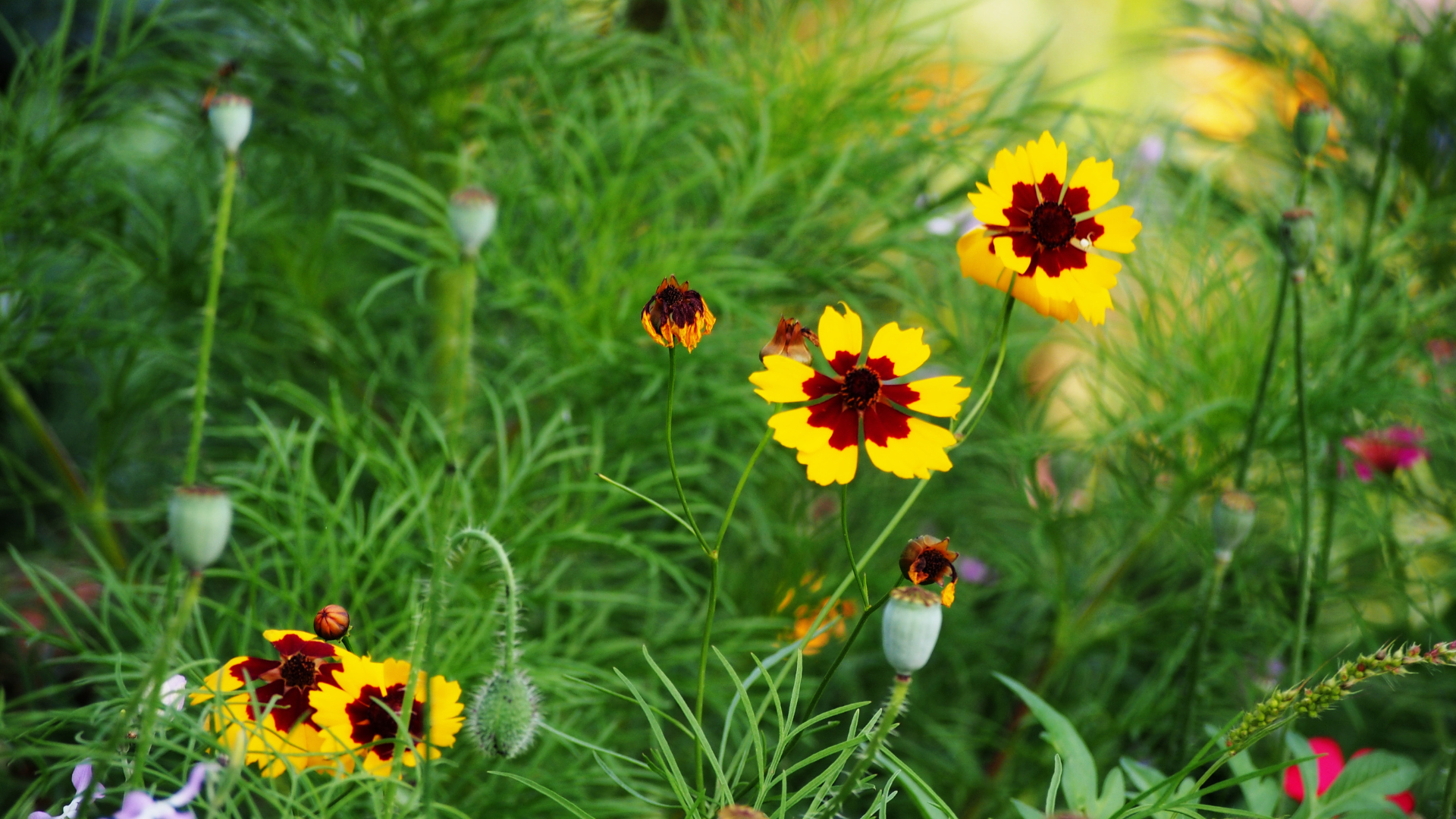



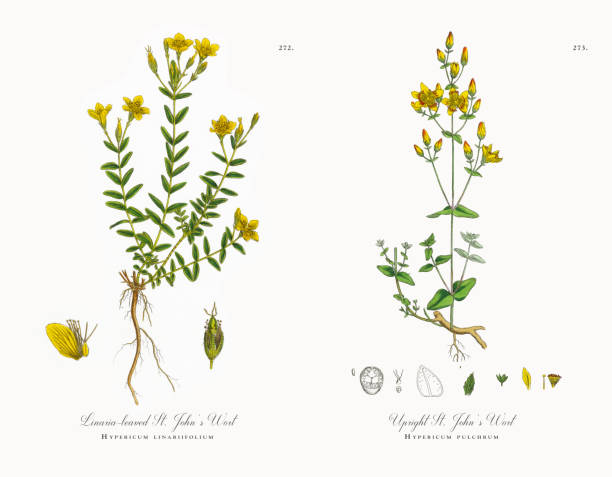

+ show Comments
- Hide Comments
add a comment